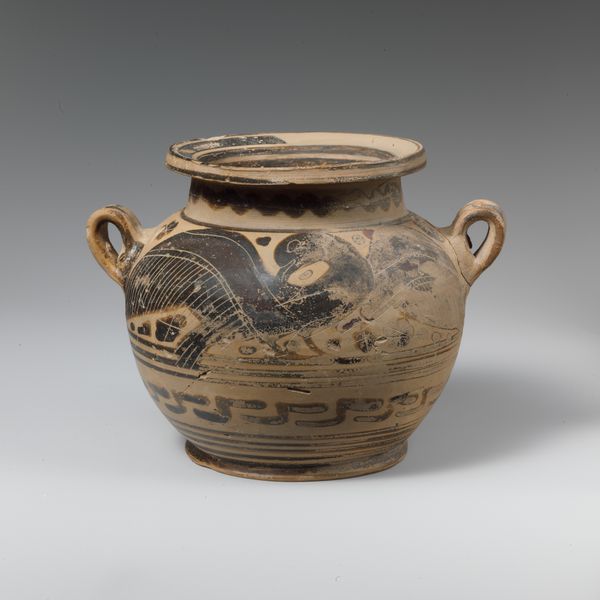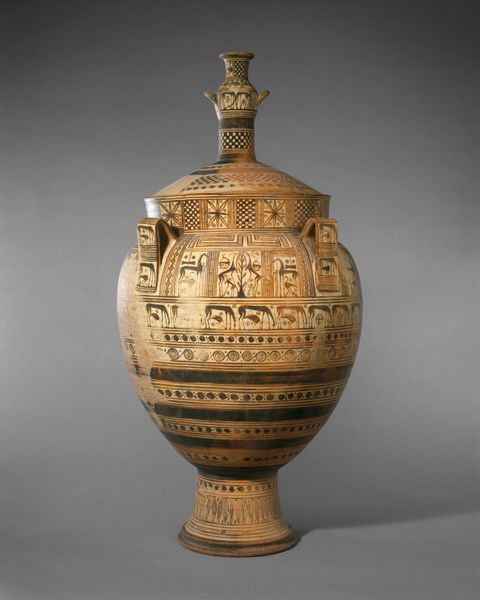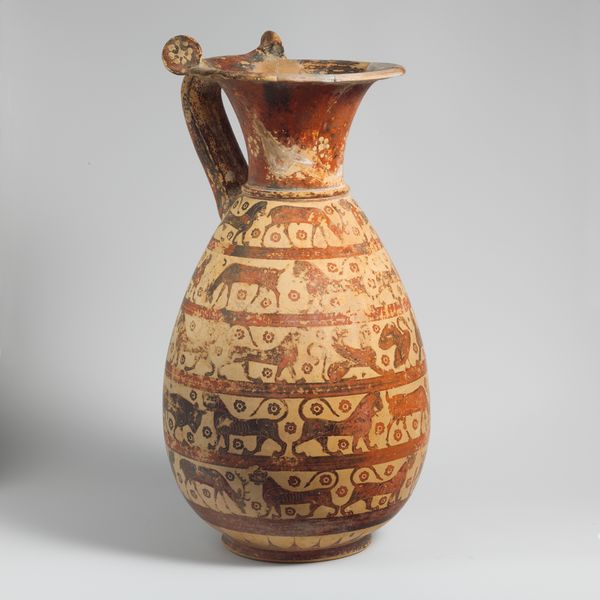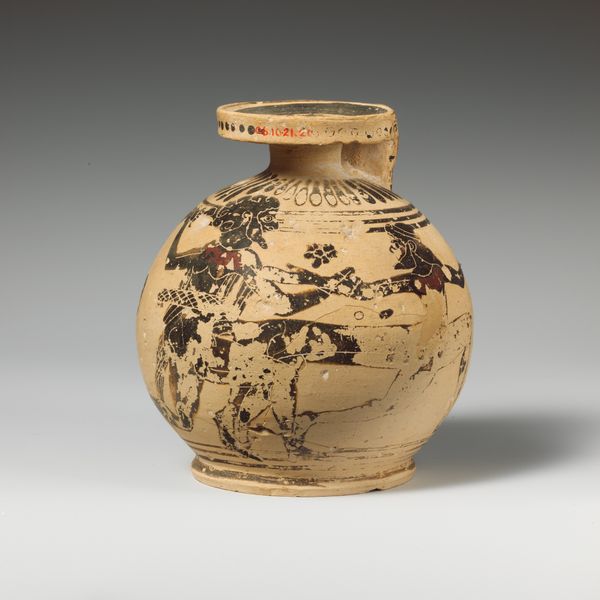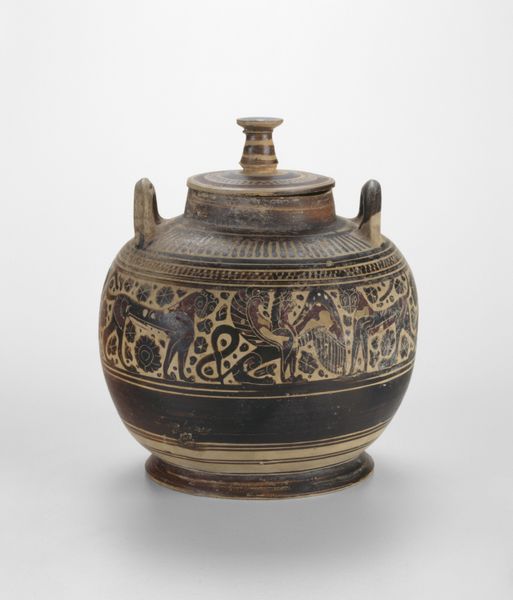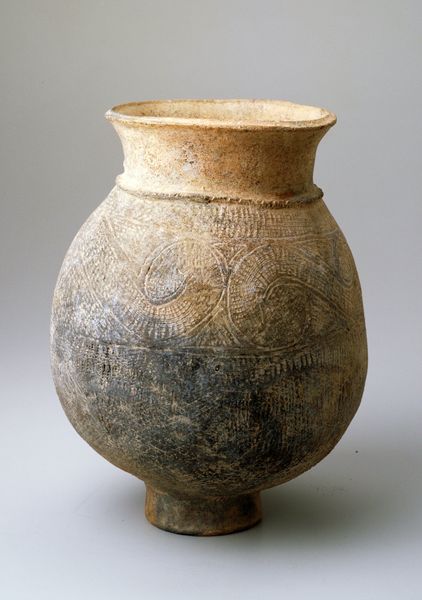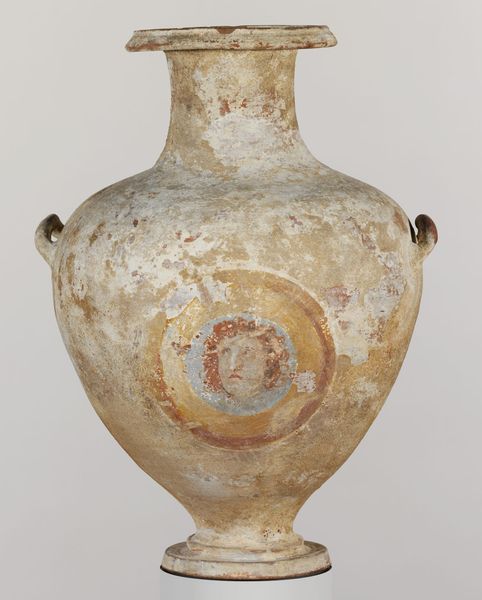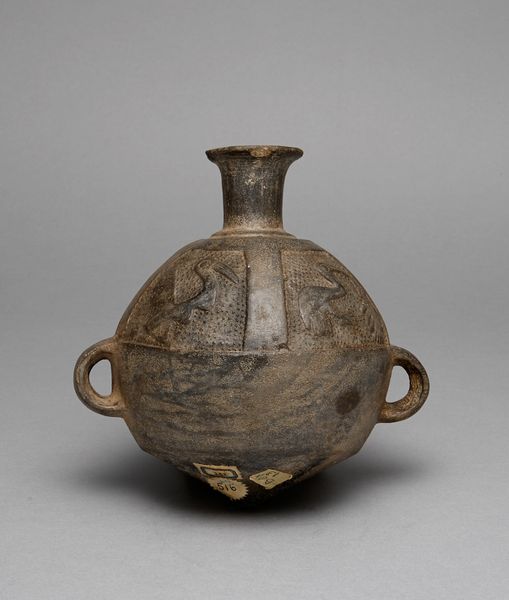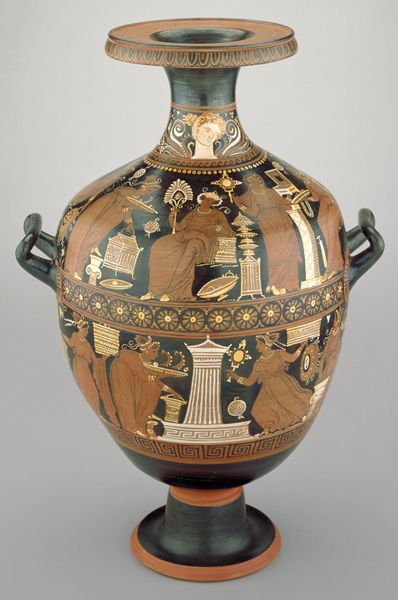
drawing, ceramic, ink, earthenware
#
drawing
#
greek-and-roman-art
#
ceramic
#
figuration
#
ink
#
earthenware
#
geometric
#
ancient-mediterranean
#
ceramic
#
earthenware
Copyright: Public domain
Curator: Well, what's grabbing you first about this Hadra Hydria, our humble water jar from 225 BC? Its resting place today is the Metropolitan Museum. Editor: Hmm...an austere beauty, almost ghostly with its pale earthen tones. And the crisp, black ornamentation--it's stark, but somehow also delicate. What was the ceramic all about? Curator: Ah, this isn’t just *any* ceramic. This is earthenware, painted with ink. You’re picking up on a style popular in Alexandria around that time—functional yet beautiful funerary vases to hold cremated remains. Notice the inscription in Greek? Editor: Yes! So, the ornamentation isn’t arbitrary at all; everything would be so deliberate, with coded significance. What can we infer from the ivy, the grapes? Dionysian echoes, perhaps? Reminders of earthly pleasures, even in death? Curator: Spot on! The symbols definitely speak to the promise of renewal. But these jars also contained the names of the deceased and the date, like a delicate material epitaph, as they interred the remains of individuals in decorative splendor. Can you see the inscription? Editor: It feels deeply poignant to see everyday elements intertwining with a monument intended for a much greater transition, one last big moment in a material object of daily significance. The geometry seems like a steady heartbeat underpinning the vase and the very passage of life. Curator: It strikes me as more like they sought to beautify a utilitarian object and grant those departing this world one final moment of art. Editor: A final embrace, manifested materially. It’s fascinating to observe how these forms and symbols persist and morph across cultures and time. So very thought-provoking. Curator: Yes, it reminds you that even water vessels had purpose and meaning back then, now held in a different context today as treasures of art.
Comments
No comments
Be the first to comment and join the conversation on the ultimate creative platform.
